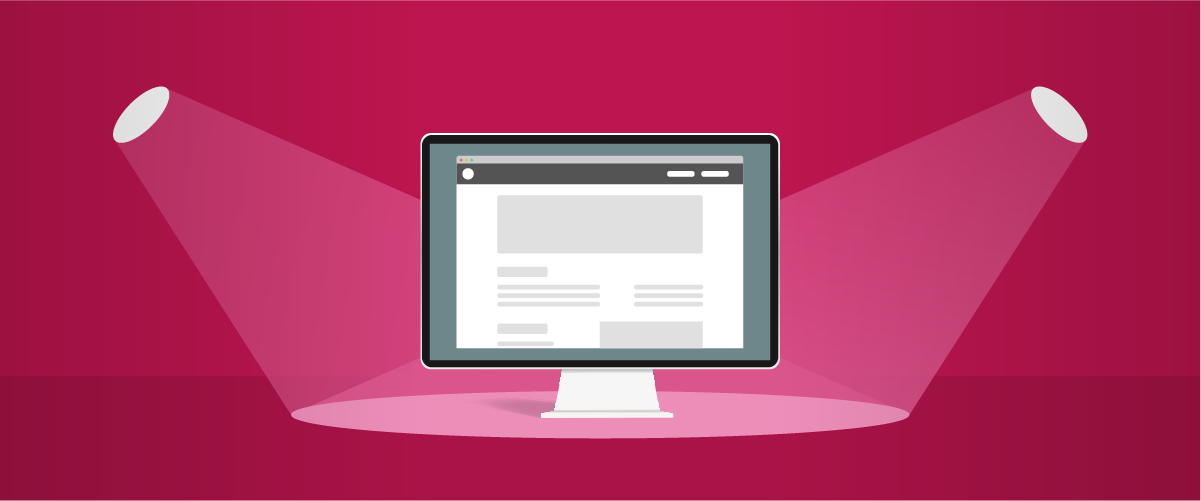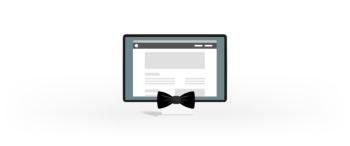Websites are a key element of differentiating your business from other companies in an increasingly online world. One in three consumers today won’t even consider a company if it doesn’t have an online presence. Regardless of the fact that your business may be a mostly in-person business, having a digital existence will get you in people’s minds and get them on your books. Here’s everything you should know about how to design and build a website for the logistics industry.

How to Design and Build a Website for the Logistics Industry

Types of Logistics Company Websites
When you’re starting out, you’ll have to figure out which type of company website you want to create. You need to think about your company and it's goals, then get your feet wet by learning about the different types of sites. Here are the three main types you should know about for the logistics industry.
- Corporate websites. If you’re a business who wants to appeal to potential and current clients about your company, its services, your fleet, company news, and how to get in contact, this is for you! Your website will help you to bring in new business you wouldn’t have obtained otherwise.
- Freight marketplaces. This type of website is for the “middleman” so to speak. They may not own their own fleet but coordinate between shippers and carriers. Since their website brings together these two teams, they receive income through this marketplace that they created.
- Freight forwarders. This type of website helps visitors to arrange the movement of freight from point A to point B. They help with transportation, warehousing, packaging, and distribution.
Knowing which type of website you want and need can help direct your steps to create a successful online presence. The right website often ties directly back to the business model that you have in place. If you employ website design services, this information about the model of your business is crucial to share with your developer so that they have a clear picture of what you want.
Must-Have Features for Logistics Websites
The must-have features are broken down based on the type of website that you’re designing. Don’t bypass that first step as you’re going through the design process. Having a website with the right information will help you better serve your customers and make your business more productive.

Corporate Website Must-Haves
- Detailed information about company services
- Customer testimonials and reviews
- Clean, clear, and concise design
- Use a storytelling method about your company and its fleet
- Consider including statistics that demonstrate how many projects your company has completed, how many clients you serve, how many years you’ve been established
- Features that make you different from others – ex: freight calculator or shipment tracker
- Contact information or form
- Mobile functions
Freight Marketplace Must-Haves
- Benefits of using your marketplace (i.e. number of orders made, carriers available, etc.)
- Customer testimonials and reviews
- Detailed profiles for your carriers so that your customers can get to know them and select the carrier best for them
- Blog with relevant information on the industry
- Simple design that benefits the user experience
- Mobile functions
- Cargo tracking
Freight Forwarder Must-Haves
- Combination of the corporate website and freight marketplace
- Customer testimonials and reviews
- Appropriate number of images and graphs (don’t overwhelm customer)
- Simple user interface
- Ability to select between cost and shipment time
- Mobile functions
Why These Features?
The above features are essential to create the best user experience for your customer while also generating sales for yourself. Website design must toe the line between visual consistency and information that makes your customer realize why your company is unique. There are some important features that will always set your website apart. If you have customer testimonials and reviews on your website, you’re doing yourself a huge favor. Around 80 percent of consumers trust reviews as much as they trust the advice of a friend or family member. Being able to demonstrate that your services are highly-regarded by those who have used them previously is essential.

Furthermore, don’t dismiss your page loading time or your scrolling experience. With the boom of mobile devices, consumers now do almost everything from their phones. Nearly half will click off your page if it doesn’t load within three seconds on their mobile device. Additionally, if your scrolling experience isn’t optimal, then you’re looking at losing customers as well. While it may not seem like the end of the world when you’re designing the site, those type of results do make a difference. Highlighting these elements when working with website development services will ensure that you get the help you need to create an awesome site.
How Can You Make This Happen?
The easiest way to ensure that you get a site that you and your users love is to work with website design and development services. Outsourcing this work is the right way to go if you’re not an expert yourself. Here are some few quick tips that will help you ensure that your website delivers what you need.
- Emphasize visual consistency. Select a few colors that you like and stick to them across all of your web pages. You can throw contrast in here and there, but you want to make sure nothing is too distracting for the reader and they’ll be able to read the information that you’re putting on your site.
- Don’t forget about unsavvy tech users. If you’ve grown up with technology, you might not think there’s another way, but there are plenty of people out there who don’t know what a hamburger menu is. Consider making your website intuitive for everyone, and know that intuitive for you might not be instinctive for someone else.
- Go for consistent navigation. Once you decide on website navigation, don’t switch it up from page to page. This will only confuse people (particularly those who aren’t tech savvy). Keep the company logo, menu, etc. in the same place from page to page.
- Have a search bar. If your site is large, add a search bar on your pages and make it visible so someone can find something on your website even if they aren’t sure how to navigate.
- Include social media. If you don’t have social media, get on those platforms because that’s another way to expand your presence. Once you have your accounts, be sure to link them so that people can share their experience on Facebook, Instagram, and Twitter as well!
Final thoughts
Interested in implementing some of the key tips you’ve learned above? Website design and development services are available at an affordable cost. Set yourself apart from the competition in the trucking industry and revamp your online presence today.



